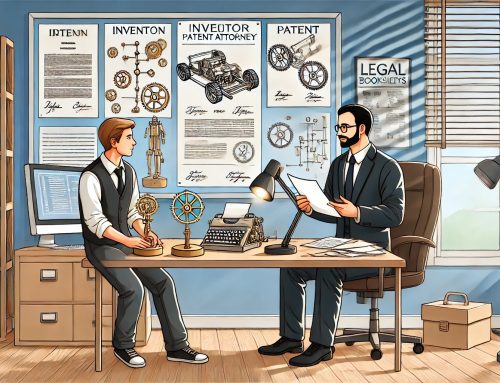Getting a patent is how you protect your intellectual property. With a patent, you can prevent others from copying your idea and profiting from your creation. Patent protection ensures you have exclusive control over your invention. You are not limited to filing a patent application on an idea when a prototype or tangible item is already brought to life.
Applying for a patent is done through the United States Patent and Trademark Office, which can stop someone else from making, using, selling, or importing your idea. Before taking the steps to become a patent holder, you should understand the types of patents and how they can protect your invention.
What Are the Three Types of Patents?
The United States Patent and Trademark Office has three different patents to protect your creation. Before you begin the patent application process, you need to know which of these patents is the right match for your idea. A patent lawyer can help you understand everything you need for these processes.
Utility Patents
Also called patents for invention, utility patents are the most common United States patents. A utility patent is for new and useful machines, processes or compositions of matter, such as tools, computer software, machines, and medical equipment. To obtain a patent for this, you must show you have a new and useful device or process that makes it different from any other existing patent or known idea. You will generally have broader protection with a utility type of patent versus a design patent, but you will need to pay maintenance fees once the patent issues. And although a utility patents may generally offer broader protection it does not necessarily mean it offers stronger protection.
Design Patents
A design patent concerns the appearance of a manufactured product. Since this patent is about how something looks, it is less expensive and often less complicated to obtain. Protecting the ornamental look of a product, such as the shape of a boat hull or the tread of a tire can provide immense value to the patent holder.
Plant Patents
If you have discovered or invented a new plant, you can use a plant patent to keep others from making, selling, or using it. The protection remains for up to 20 years. During this time, you, as the patent holder, have the right to exclude others from asexually reproducing, selling, or using the plant for commercial purposes without your permission. This period of exclusivity enables you to potentially recoup your development costs and profit from your innovation.
Basic Steps of the Patent Process
The first step before filing a patent is to conduct a thorough patent search. Although no patent search can guarantee finding all prior art, a patent search may reveal any existing patents or published patent applications that are similar to your invention. This process can be helpful in assessing whether your invention is novel and non-obvious, two of the main criteria for patentability. Moreover, the insights gained from a patent search can help you refine your patent application and better define the scope of your invention to increase the likelihood of obtaining patent protection.
You may worry about someone patenting your idea before you can finish securing funding or finalizing your idea. This is where a provisional patent application can be useful. With a provisional patent application, you can have patent pending status for 12 months before your patent is finalized. A provisional patent application is a type of utility patent application.
When you want to get a patent, you also need to determine if it is a utility, design, or plant patent. Since this process can be complex, it is advised that you hire a patent attorney to avoid making any costly mistakes. If you leave out any details, your application will be incomplete. Patent attorneys help you file a patent application and ensure you meet the correct filing deadlines and pay the proper filing fees.
Can You Patent an Idea Yourself?
The patent office does not have a rule stating that you must use patent lawyer to help you get a patent. However, the chances of navigating the patent office without the knowledge and experience of a patent attorney is virtually zero. A patent lawyer can review relevant prior-art patents, conduct patent searches, and help you avoid making mistakes in the application process.
Legal advocates for patent protection are an asset for any entrepreneur, inventor, or company that wants to protect their ideas and creations with patents. A patent attorney at Tucker Law can help you navigate the complex world of patent law.







